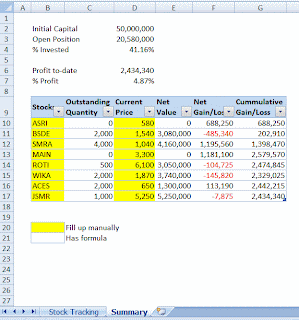The 4 emotions are well-written in the title of this post, but with some examples, here they are..
#1. Fear - I can’t take another loss; I’ll sit this one out.
#2. Hope - I sure hope this goes up right after I buy it.
#3. Greed - I’m making so much money, I’m going to double my position.
#4. Despair - This trading system doesn’t work; I keep losing money.
"How many times have you felt these emotions while trading?"So how do you avoid being trapped and finally losing your hard-earn money because of these emotions? My simple answer is to stay DISCIPLINED to stick to your trading rules and plan. Before trading stocks, you should spend some time crafting your business plan (trading system), read books on fundamental and technical analysis, create rules to enter and exit the market (keep testing your system).
Come up with a good system (good here means the system will give you positive return in the long run if you religiously following it) and be disciplined.
Some examples:
You see a stock that's cheap enough and your friends keep telling you how this stock will go up in a few days. You want to buy it because you HOPE it will go up. Instead, go to your system and ask yourself questions if the stock is worth buying. Does it satisfy your entry rules? Is your capital big enough to allow you to buy the minimum lot of the stocks? Have you done research on the stock personally (you are responsible on your own trades anyway)?
You are in the market having bought stock A which has gone down passing your cut-loss limit of 10%. Deep in your heart you know you should get out, because you write it in you system that you have to get out when it drops by 10% from your buying price (why 10%? you need to figure out what percentage works best for you). However, unknown voice in your brains says,"Hey, it will bounce back up tomorrow! Do not worry!". Again, this is HOPE! Once in a while the stock will go up, but dare not to predict market! You better get out before you lose more money.
"When HOPE is what's left, get out of the market"























